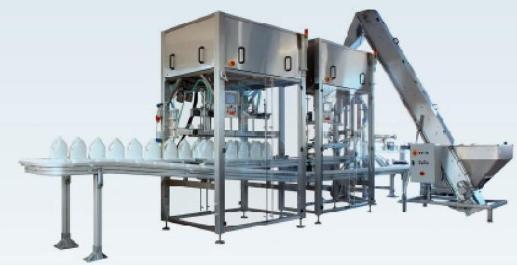Understanding Automatic Plunger Filling Machines: Efficiency and Precision in the Packaging Industry
Automatic plunger filling machines are essential tools in the manufacturing and packaging industry, particularly for liquids and viscous substances. These machines utilize a plunger mechanism to dispense precise amounts of product into containers, ensuring accuracy and efficiency in the filling process. Understanding how these machines function and their advantages can greatly enhance productivity and quality control in a manufacturing setting.
The core operation of an automatic plunger filling machine involves a plunger that is driven by a motor. When the machine is activated, the plunger moves back, creating a vacuum that draws the liquid product into the filling chamber. Once filled, the plunger moves forward to dispense the exact volume of liquid into the container. This mechanism allows for a high degree of accuracy, making it ideal for products that require consistent measurements, such as pharmaceuticals, cosmetics, and food products.
One of the key benefits of using automatic plunger filling machines is their efficiency. These machines are designed for high-speed operation, which significantly reduces the time required for filling compared to manual processes. With the ability to fill multiple containers simultaneously, businesses can scale their production to meet demand without sacrificing quality or consistency.
Another advantage is the versatility of automatic plunger filling machines. They can accommodate a range of container sizes and shapes, making them suitable for various industries. Whether you are working with small vials for laboratory samples or larger bottles for consumer products, these machines can be adjusted to meet specific requirements, which adds to their appeal in a diverse market.
Moreover, automatic plunger filling machines are equipped with advanced technology that enhances precision. Many models include features such as programmable settings and automated calibration, allowing operators to adjust filling volumes easily. This technological integration not only streamlines operations but also minimizes the risk of errors that can occur with manual filling processes.
In addition to operational efficiency, these machines also contribute to improved hygiene and safety standards. With automated filling, there is less direct contact with the product, reducing the risk of contamination. This is particularly important in industries where product integrity is paramount, such as food and pharmaceuticals.
In summary, automatic plunger filling machines represent a significant advancement in the packaging industry, offering speed, accuracy, and versatility. By incorporating these machines into your production line, you can enhance efficiency while maintaining high standards of quality control. Understanding their functionality and benefits can help businesses make informed decisions about their packaging processes, ultimately leading to improved product delivery and customer satisfaction.
The core operation of an automatic plunger filling machine involves a plunger that is driven by a motor. When the machine is activated, the plunger moves back, creating a vacuum that draws the liquid product into the filling chamber. Once filled, the plunger moves forward to dispense the exact volume of liquid into the container. This mechanism allows for a high degree of accuracy, making it ideal for products that require consistent measurements, such as pharmaceuticals, cosmetics, and food products.
One of the key benefits of using automatic plunger filling machines is their efficiency. These machines are designed for high-speed operation, which significantly reduces the time required for filling compared to manual processes. With the ability to fill multiple containers simultaneously, businesses can scale their production to meet demand without sacrificing quality or consistency.
Another advantage is the versatility of automatic plunger filling machines. They can accommodate a range of container sizes and shapes, making them suitable for various industries. Whether you are working with small vials for laboratory samples or larger bottles for consumer products, these machines can be adjusted to meet specific requirements, which adds to their appeal in a diverse market.
Moreover, automatic plunger filling machines are equipped with advanced technology that enhances precision. Many models include features such as programmable settings and automated calibration, allowing operators to adjust filling volumes easily. This technological integration not only streamlines operations but also minimizes the risk of errors that can occur with manual filling processes.
In addition to operational efficiency, these machines also contribute to improved hygiene and safety standards. With automated filling, there is less direct contact with the product, reducing the risk of contamination. This is particularly important in industries where product integrity is paramount, such as food and pharmaceuticals.
In summary, automatic plunger filling machines represent a significant advancement in the packaging industry, offering speed, accuracy, and versatility. By incorporating these machines into your production line, you can enhance efficiency while maintaining high standards of quality control. Understanding their functionality and benefits can help businesses make informed decisions about their packaging processes, ultimately leading to improved product delivery and customer satisfaction.
Previous
Previous:






